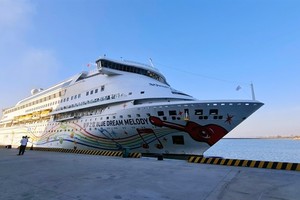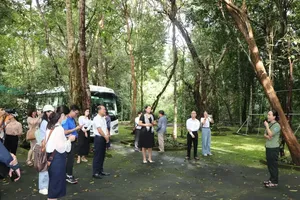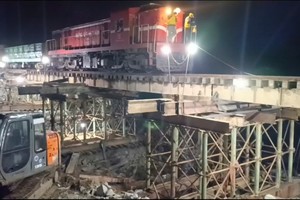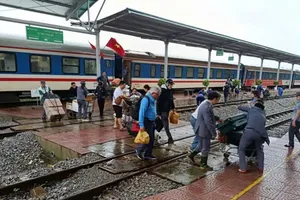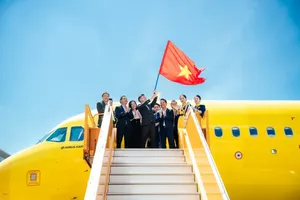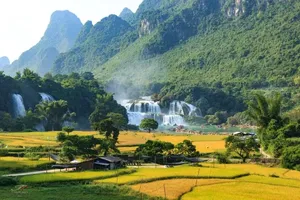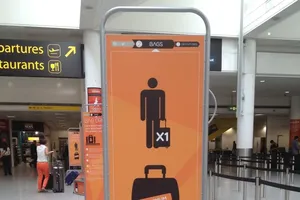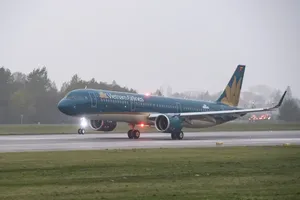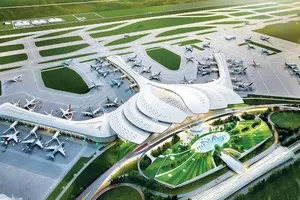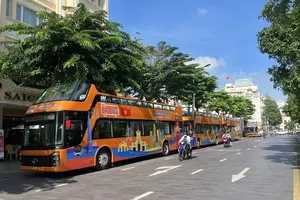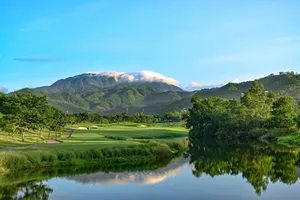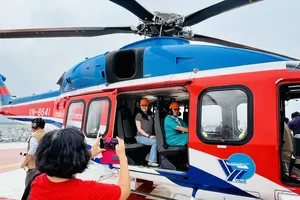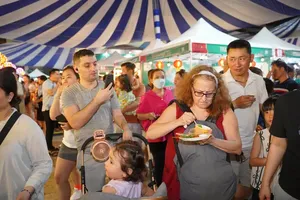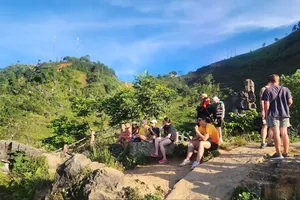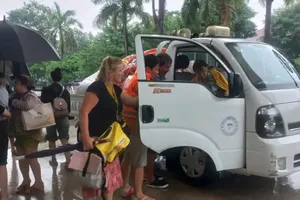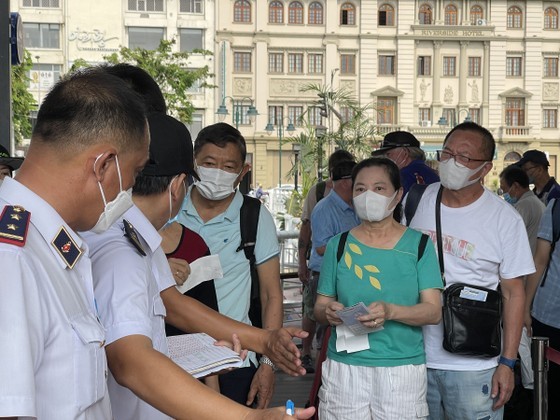 |
Tourists are getting ready to board the boat at Bach Dang Wharf (District 1) to travel from Ho Chi Minh City to Vung Tau. |
Despite having over 1,000km of inland waterways and numerous canals that extend deep into the urban areas, passing through many picturesque neighborhoods, Ho Chi Minh City is currently facing difficulties in fully tapping into the potential of its water transportation system. Particularly, it has not yet become one of the alluring tourism products for tourists to explore.
Investment challenges in waterway transport
HCMC is traversed by four main river routes, namely Saigon, Dong Nai, Long Tau, and Soai Rap, alongside an extensive network of canals that connect Binh Duong, Tay Ninh, Dong Nai, Long An, Tien Giang, and Ba Ria - Vung Tau. Capitalizing on this waterway advantage, the city currently operates various waterway transportation routes, including Waterway bus route No. 1, which runs along the Saigon River from Bach Dang Wharf in District 1 to Linh Dong Wharf in Thu Duc City. Additionally, there is a passenger transport route on the Saigon River from Bach Dang Wharf to Dinh Wharf and Duoc Wharf in Cu Chi District, which connects with the Dong Nai River to reach Thu Dau Mot City in Binh Duong Province and Vung Tau City in Ba Ria - Vung Tau Province.
Besides these established routes, HCMC offers a range of waterway tours, such as scenic cruises to enjoy local cuisine and the night scenery along the Saigon River. Another popular option is taking a small wooden boat to explore the Nhieu Loc - Thi Nghe Canal route in District 3.
Mr. Nguyen Kim Toan, the Director of Thuong Nhat Co., Ltd., has praised the beauty of the Saigon River, stating that it stands on par with the rivers flowing through capital cities like Bangkok in Thailand, Seoul in South Korea, and Shanghai in China. He noted that the riversides of those cities boast many architecturally decorated structures with captivating night lighting, particularly at the docks, which are well-developed to offer convenient mooring for boats and create a charming ambiance both above and below the water.
In contrast, Mr. Nguyen Kim Toan observed that the banks of the Saigon River lack notable features, and the docks are rather basic. To enhance the appeal of the Saigon River to tourists, he suggested that HCMC should invest in elevating the Bach Dang dock to a higher standard. He proposed the possibility of extending the dock area from Ba Son to the Thu Ngu Flagpole.
Mr. An Son Lam, Director of Indochina Sailing Company, shares a similar perspective, pointing out that numerous boats at Bach Dang dock have been catering to tourists for over 15 years and have now become outdated, no longer meeting the current expectations of travelers. However, boat owners are reluctant to invest in upgrading and renovating their vessels. One of the primary reasons behind this hesitation is the uncertainty surrounding the construction of the Thu Thiem No.4 Bridge, which makes it challenging to ascertain the suitable size and specifications for the new boats.
Administrative procedures pose a considerable barrier to business investments. According to Mr. Nguyen Kim Toan, despite the keen interest in investing in the Waterway bus route No.2 following the successful launch of route No.1 in 2017, the plans have been stalled due to procedural complications. Furthermore, despite the Waterway bus route No.1 having been operational for an extended period and initially designed with nine stops, only five are in service now. The completion of the remaining stops remains entangled in investment procedures.
In regards to the issue of navigational clearance for bridges, including Thu Thiem No.4 Bridge, the HCMC Department of Transportation has disclosed that they are currently exploring the feasibility of constructing a swing bridge or a bascule bridge. However, they have expressed concerns about the potential high operational costs associated with such bridge designs. Additionally, the department has put forward a proposal to the HCMC People's Committee, urging them to continue directing investors toward the implementation of functional transformation and the proper organization of operations at the Nha Rong - Khanh Hoi port area in line with the existing planning to develop it into a prominent central tourist passenger terminal.
 |
Tourists visit Can Gio District by canoe. |
Making dock planning, ensuring navigational clearance
According to numerous waterway experts, HCMC must promptly identify navigational clearances of bridges to enable businesses to be well-informed and strategize investments in modern watercraft to enhance transportation and waterway tourism. It is particularly crucial to promptly address the navigational clearance of Thu Thiem No.4 Bridge, considering both present needs and prospects for the waterway tourism sector. Over time, the Nha Rong Port in District 4 has accommodated international seafaring vessels, becoming a familiar and popular destination for many tourists. Simultaneously, investments in piers and the creation of scenic landscapes on both riverbanks are also being considered. Many tourism businesses suggest that HCMC can take immediate, cost-effective actions such as illuminating the bridges with decorative lights at night and maintaining the cleanliness of rivers and canals, ensuring they remain free from the garbage.
From a management standpoint, Ms. Bui Thi Ngoc Hieu, Deputy Director of the HCMC Department of Tourism, revealed that they had conducted surveys on various routes and itineraries to revive river tourism. However, the specific mooring spots for restaurant and accommodation boats are awaiting finalization as part of the city's planning process to designate suitable areas. In Can Gio District alone, 12 locations are designated for boat docks, yet they are still pending evaluations from the Department of Natural Resources and Environment and the Department of Planning and Architecture.
Meanwhile, Mr. Bui Hoa An, Deputy Director of the HCMC Department of Transportation, recognizes that the key to waterway development lies in having well-planned berths. The subsequent step involves land use planning before construction can begin. However, the progress of implementing and updating the inland waterway berth planning by the People's Committee of Thu Duc City and the districts is currently slower than the city's directives.
Mr. Truong Tien Trien, Vice Chairman of the People's Committee of Can Gio District, highlights the district's abundance of rivers, canals, and waterways, which offer significant potential for waterway development, particularly in the tourism sector. Despite having several waterway development projects, such as Tam Thon Hiep - Thieng Lieng, Can Gio - Con Dao, or Can Gio - Tien Giang, they are yet to be implemented. The Binh Khanh ferry currently faces regular congestion on weekends. In an effort to improve transportation and cater to tourists and residents, the district is considering establishing a new route from Bach Dang Wharf in District 1 to Tac Suat Wharf. However, as of now, there is no investor for this project.
